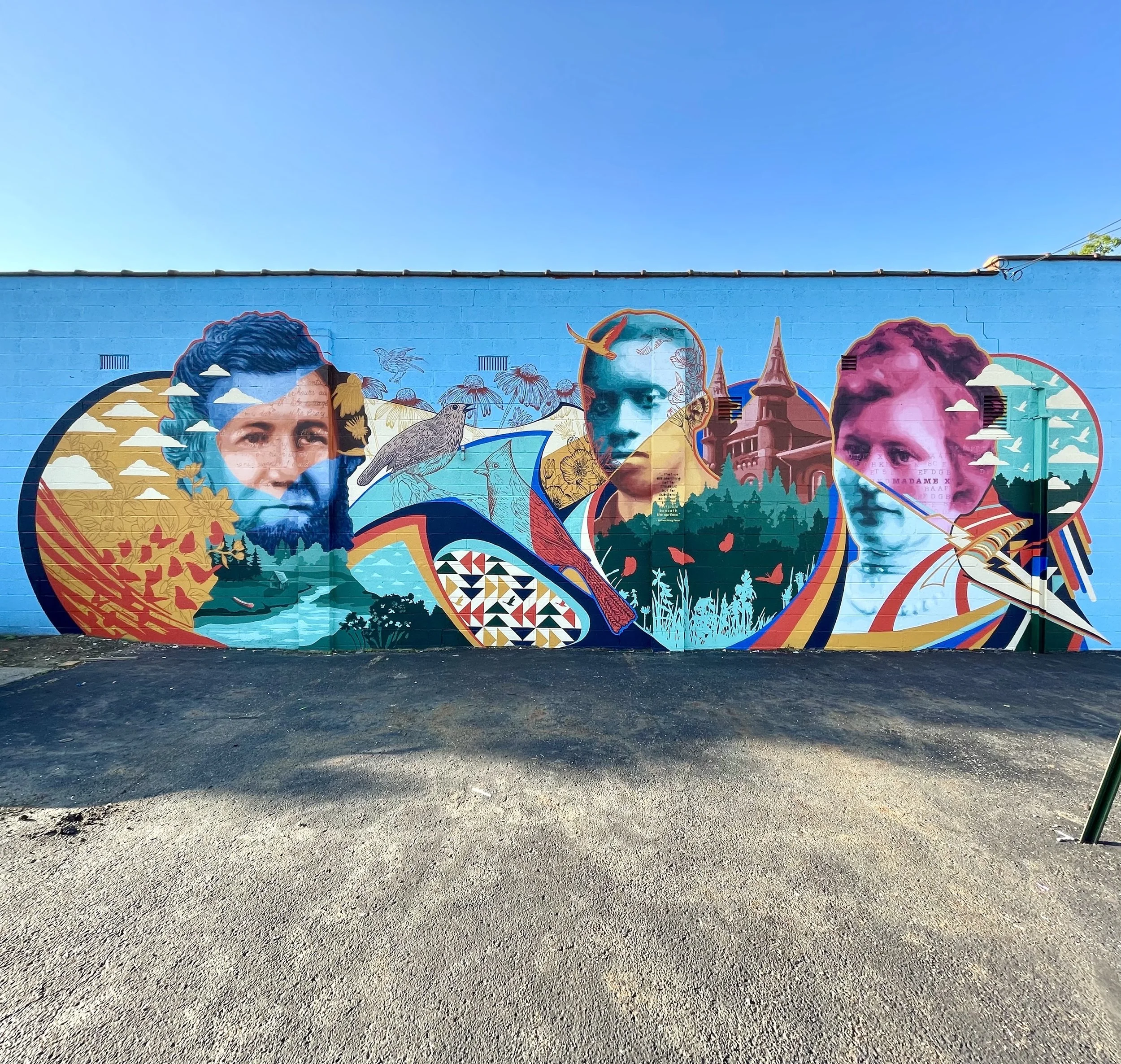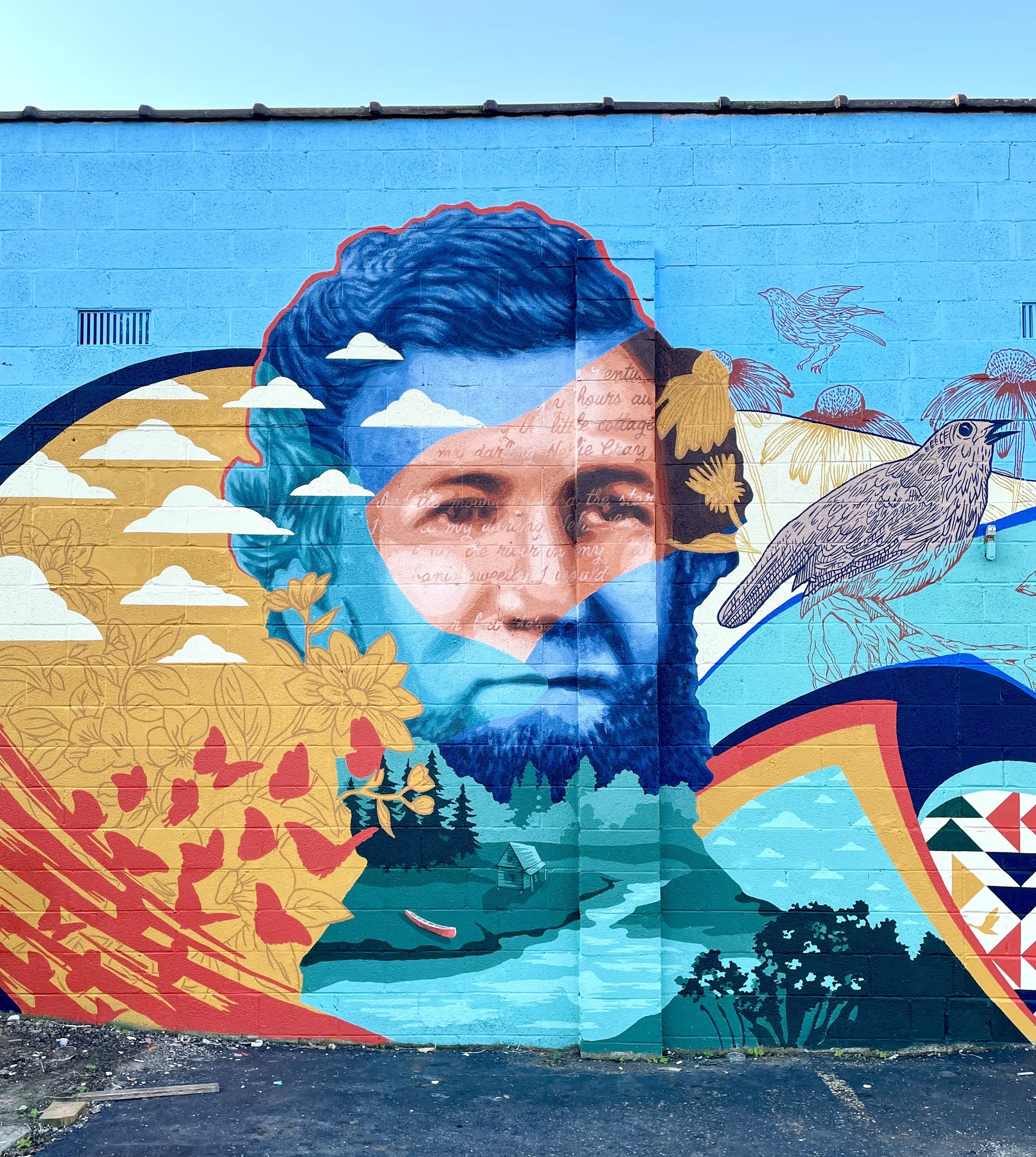This mural celebrates the rich, unique history of Westerville, Ohio, and ties it to the community’s contemporary culture. The design is structured around three prominent historical figures: Benjamin Hanby, William Henry Fouse, and Agnes Meyer Driscoll. These three figures are surrounded by depictions of nature, emphasizing the prominence of the outdoors in Westerville. Trees are abundant in the design, as they are in the area, particularly at Alum Creek State Park. Nicknamed “Tree City USA” and honored as a first class “Tree City of the World” by the Food and Agricultural Organization of the UN, the roots of Westerville’s woods run deep. Butterflies and flowers also flow through the design, referencing Westerville’s “Monarch Pledge.” This promise aims to raise awareness and support the fading monarch butterfly population, including the building of butterfly habitat gardens.
On the left side is Benjamin Hanby, a composer and abolitionist, who was active in the underground railroad. His portrait is a collage of imagery from his lyrics as well as actual text from his famous anti-slave ballad, Darling Nelly Gray. The triangular design to the right of Hanby represents the “flying geese” quilting pattern which may have been used to communicate messages that would help navigate the travels of an escaped slave. The three bird images to the left of Hanby are derived from the covers of three songbooks he co-authored called Our Song Birds.
Near the top center of the mural is William H. Fouse, the first African-American to graduate from Otterbein College. William also served as a principal and supervisor of schools in Kentucky, and developed the Bluegrass Oratorical Association and the Bluegrass Athletic Association. The historic Emerson Elementary School, formally the Westerville High School, is represented to the right of Fouse, and their two iconic Romanesque round towers add a dynamic element to the mural design.
On the right side is Agnes Meyer Driscoll, a cryptanalyst during World War I & II, who is known as the first lady of Naval Cryptology. Driscoll attended Otterbein College from 1907 to 1909, where her father also taught in the music department. Driscoll is recognized for breaking Japanese naval codes in the 1920s-40s, and introduced early machine support for cryptanalysis. Known by her colleagues as Madame X, this pseudonym is conveyed on her face, surrounded by code-like patterning. The naval cryptologic insignia is represented next to Driscoll and the surrounding energetic lines and shapes serve as a symbol for Driscoll’s intrepid spirit.





